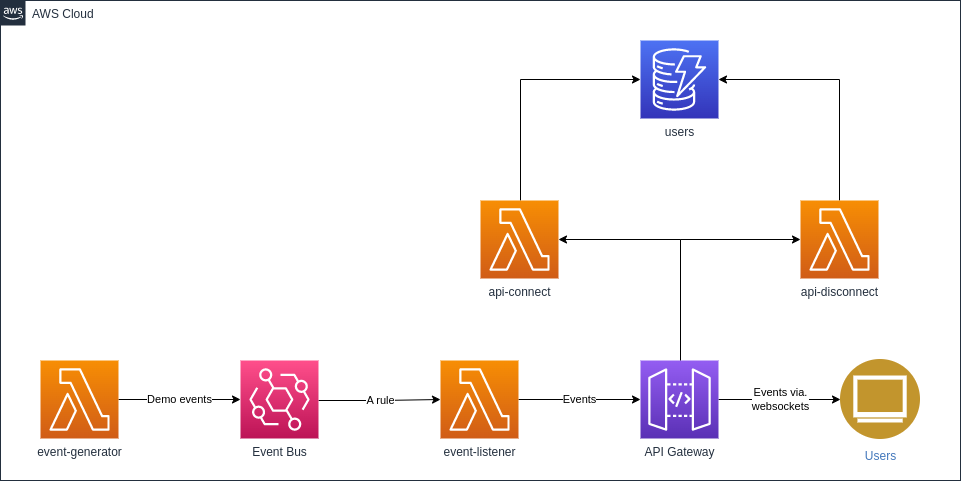Live debugging EventBridge Event Buses

When you hear the term “Event Bus” you might start getting flashbacks to days spent reading a book on Java design patterns. Fear not - these days they’re back in fashion, especially with the AWS service CloudWatch Events that morphed and evolved into its own offering under the EventBridge moniker.
We could debug EventBridge Event Buses through conventional means like logs and tracing, but where’s the fun in that? Sometimes it’s just far easier to understand what’s going on in your systems with a visual display. Demos that show an auto-refreshing screen in CloudWatch logs just don’t pop in the same way as seeing new events arrive on-screen with a flash of colour. Let’s fix that!
OK let’s segue to the serious side for just a moment: this blog post is an accompaniment to a GitHub project that shows how API Gateway can be used to host a websocket API that receives events from EventBridge and passes them on to users of a React Single Page Application (SPA). It’s a practical but fun way of showing how you can send and receive events and do something useful, designed as a learning aid for users who are new to EventBridge. Here’s the architecture:

PS: you can download the above PNG and open it in diagrams.net to play with it.
As a user of the application, we start toward the top of the diagram by connecting to the websocket API hosted by API Gateway. A connection Lambda function is triggered which adds our connection ID to a DynamoDB table of all the current users. When the generator Lambda on the left of the diagram is triggered, it sends test events into our Event Bus. It’s got some random delays for added dramatic effect.
A rule is attached to the Event Bus, and this sends our events to a Lambda function that checks the DynamoDB table for users and forwards them on as websocket messages. When a user disconnects, another Lambda function is triggered to remove their connection ID from the table.
Checkout the source of those Lambdas on GitHub to see how each one works.
You’ve seen the gif. You’ve got the code. Go forth and share fun demos with your team as you show them the power of fully managed event sending.